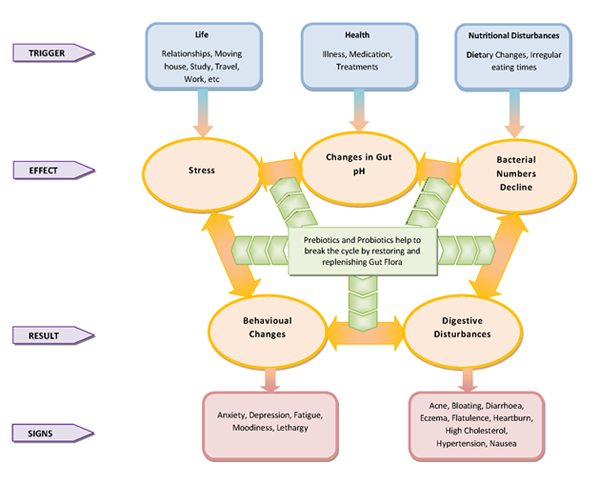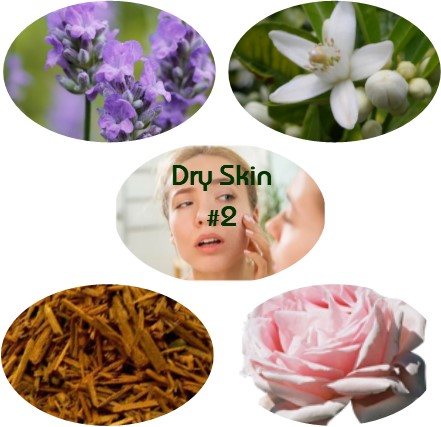
Understanding Prebiotics and ProbioticsPrebiotics and ProbioticsBeing a therapist who has studied nutrition, along with being a coeliac with a weakened immune system, I have spent a lot of time studying up on prebiotics and probiotics over the years, mainly to increase my immune system and decrease my gut reactions to foods I am allergic to. One of the best analogies I came across in the many seminars I attended was it was similar to trying to grow a garden.† Most of us understand how a garden grows and at some stage in our schooling years learnt about ecosystems and how everything needs something to help establish the next level.† Your gut is no different!† Establishing the microflora is critical to the development and effective functioning of our immune system as well as reducing the risk of infection. So what are prebiotics?Prebiotics are the fertiliser required for probiotics to survive and flourish in.† You can take masses of probiotics and still have a weakened immune system because there is no lush environment for the probiotics to grow in. Prebiotics are indigestible food fibres in the form of inulin and oligosaccharides (uh huh), and some common sources are raw garlic, raw and cooked onions, raw leeks, raw asparagus, bananas (my personal favourite although has a lower scale), and raw wheat bran.† Higher up the list is raw dandelion greens, so if you have a dog free garden, start munching!† Or plant yourself a tub of dandelions, eat the leaves and 3 years later make coffee from the roots. If your reading this and going *gag*, you'll be pleased to know there is a yeast by the name of Saccharomyces boulardii which is also a prebiotic and readily available for you to take.† This little beauty was discovered in 1923 and comes from the tropical fruits lychees and mangosteen, and has been in several clinical trials over the years.† It has brought relief to many over the years who have suffered from:
It's anti-inflammatory, antimicrobial, antitoxin and increases levels of disaccharidases (enzymes that break down sugars) as well as increasing immune levels by boosting the antibody Immunoglobulin A (IgA). What are Probiotics?Probiotics are the good bacteria in your gut.† They live in all areas of the gut... from your mouth to your lower bowel.† They have been around for over a hundred years in modern science, however the health benefits of eating fermented food goes back to ancient times.† Probiotics help reduce
 What's the difference between all the different Probiotics?There's so many!† How do I know which formula is right for me?
Where to from here?After reading all of the above you've decided one of two things... Phew, my gut is okay... or HELP! Where do I start? If you're in the second category, you may want to try out my gut restoration programme which will also help enhance your immunity.† This is a programme I devised when I was diagnosed with Coeliac's Disease and was fed up with the way my body was flaring up to nearly everything I ate due to being in such an inflamed and weakened state (eg sulphites, salicylates, sugars, vinegars... I was going nuts and constantly seesawing between bloating and dermatitis herpetiformis!) I did this programme as listed below and I noticed an immediate difference within 4 weeks, got lazy, and flared up again, so stuck to it properly and have been good for a long time.† It's 3 yrs later, a year of working and irregular meals, summer with a few glasses of wine and I've noticed my symptoms coming back so we're heading into round 2. As a maintenance programme, I do take SBPro and Triflora for a week each about every 3 months... usually when I've been exposed to gluten so my gut is feeling 'blargh'. I've had many successes with family and clients as well, and they keep telling me I need to publish this info, so here it is! Amor's Gut Restoration Progamme Please note: If your gut flora levels are very low, you may find you experience bloating, wind and cramping when you first start taking probiotics as the good bacterias start to to challenge the bad bacteria and cause them to die off.† This could last up to 6 weeks.† If this happens, reduce your dose and extend your programme. http://jonbarron.org/article/probiotic-miracle#.UwiWiM6Wr1k References http://www.ncbi.nlm.nih.gov/pubmed/24091275 More references to come! |



